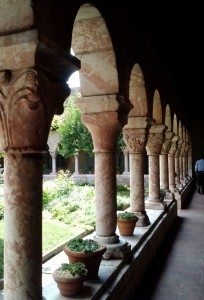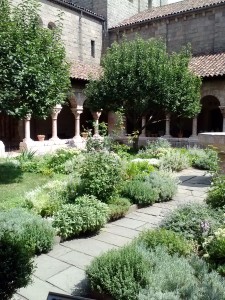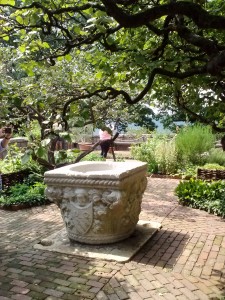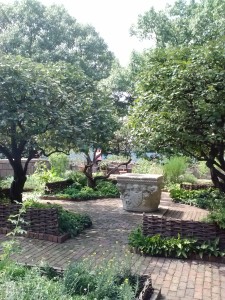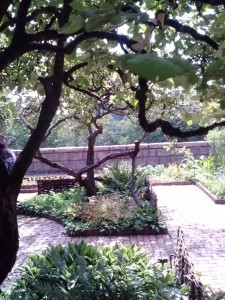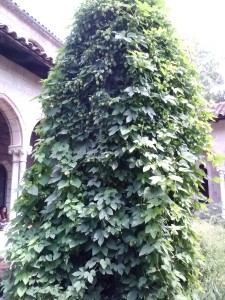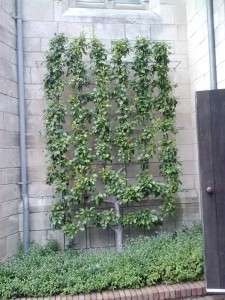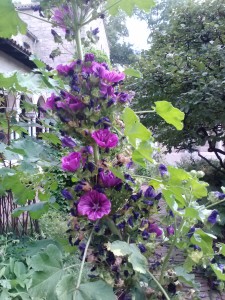A Visit to The Cloisters in New York City
Meanwhile — Sloth in the cloister would not have been deemed desirable. You could think of a monastery garden as an early form of permaculture. The Cloisters in Manhattan has three cloistered gardens open to the sun and air. Only one is planted with plants that would have grown in such a place in Medieval times. A monastery garden grew its own food, but also grew plants for other purposes, and some of these plants were dangerous – poisons that were medicinally useful, like foxglove (digitalis)… or just plain simply poisonous, like castor bean plant (ricin — for which there is no antidote), and datura (tropane alkaloids). These plants would have been grouped together in their own quadrant of the garden.
Another quadrant held plants used for culinary purposes… thyme and sage to flavor foods , hops (to flavor weak ale, which was commonly consumed instead of water), comfrey (a mineral accumulator, also used medicinally). Another quadrant grew vegetables (not tomatoes, which would come from the new world when it was ‘discovered’), some of which we would not recognize today, like skirret (tastes something like sweet potatoes, but is a bit more trouble to dig and use; (See Tom Gibson’s recent post) and stinging nettle (a pot herb that loses its sting when cooked). Both of these are important permaculture plants today.
Ignorance can be a form of sloth. An ignorant gardener would not have been long tolerated. He or she would have posed a danger to the community. While a natural landscape like a park may benefit from some form of benign sloth, true sloth would never have been tolerated in a cloister garden.
